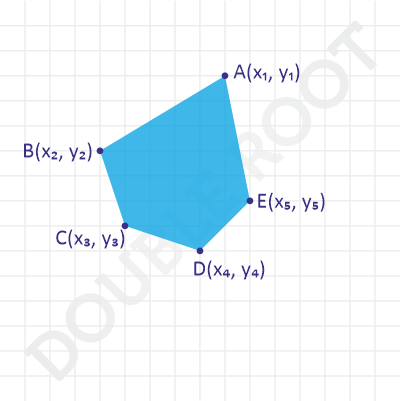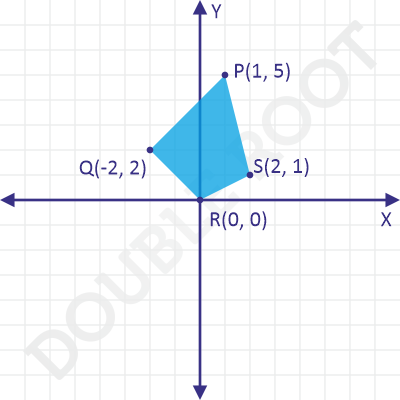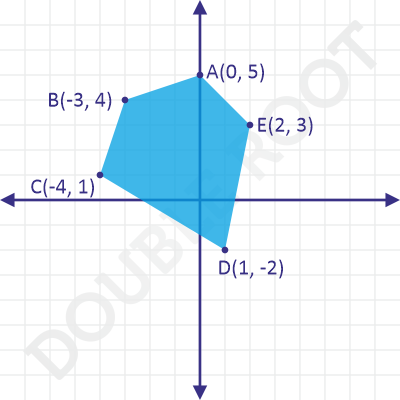Summary
This math recipe will help you find the area of a polygon, coordinates of whose vertices are known.

Skill Level
Easy
Time
Approx. 5 min
Ingredients
Coordinates of the vertices: \(A_1(x_1, y_1), A_2(x_2, y_2), A_3(x_3, y_3), …, A_n(x_n, y_n)\)
Method
To find the area of the polygon \(A_1A_2A_3…A_n\), we’ll plug their coordinates into the formula below:
Area \( = \frac{1}{2}|(x_1y_2 – x_2y_1) +(x_2y_3 – x_3y_2) + (x_3y_4 – x_4y_3) + … + (x_ny_1 – x_1y_n)|\)
Here, the vertices \(A_1, A_2, A_3, …, A_n\) must either be in clockwise or anticlockwise order.
This formula is also known as the Shoelace Formula.
Examples
Example 1 Find the area of the quadrilateral, whose vertices are \(P(1, 5)\), \(Q(-2,2)\), \(R(0, 0)\) and \(S(2, 1)\).
Solution The figure shows \(PQRS\) on the plane.

To find the area, we’ll use the above formula directly.
Area \(= \frac{1}{2}|[1(2) – 5(-2)] + [(-2)(0)-2(0)] + [0(1) – 0(2)] + [2(5) – 1(1)]|\)
\(= \frac{1}{2}|(2 + 10) + (0 – 0) + (0 – 0) + (10 – 1)|\)
\(= \frac{1}{2}|12 + 0 + 0 + 9|\)
\(= \frac{1}{2}|21|\)
\(= 10.5\) sq. units
Example 2 Find the area of the pentagon, whose vertices are \(A(0, 5)\), \(B(-3, 4)\), \(C(-4, 1)\), \(D(1,-2)\), and \(E(2,3)\).
Solution The figure shows \(ABCDE\) on the plane.

To find the area, we’ll again use the above formula.
Area \(= \frac{1}{2}|[0(4)-5(-3)]+[(-3)(1)-4(-4)]+[(-4)(-2)-(1)(1)]+[1(3)-(-2)(2)]+[2(5)-3(0)]|\)
\(= \frac{1}{2}|(0 + 15) + (-3+16) +(8 – 1) + (3+4) + (10 – 0)|\)
\(= \frac{1}{2}|15 + 13 + 7 + 7 + 10|\)
\(= \frac{1}{2}|52|\)
\(= 26\) sq. units
That’s it for this recipe. Hope you found it helpful.
For more recipes, please visit www.doubleroot.in/recipes.
You can follow me on Instagram, Twitter, or Facebook to get all updates.